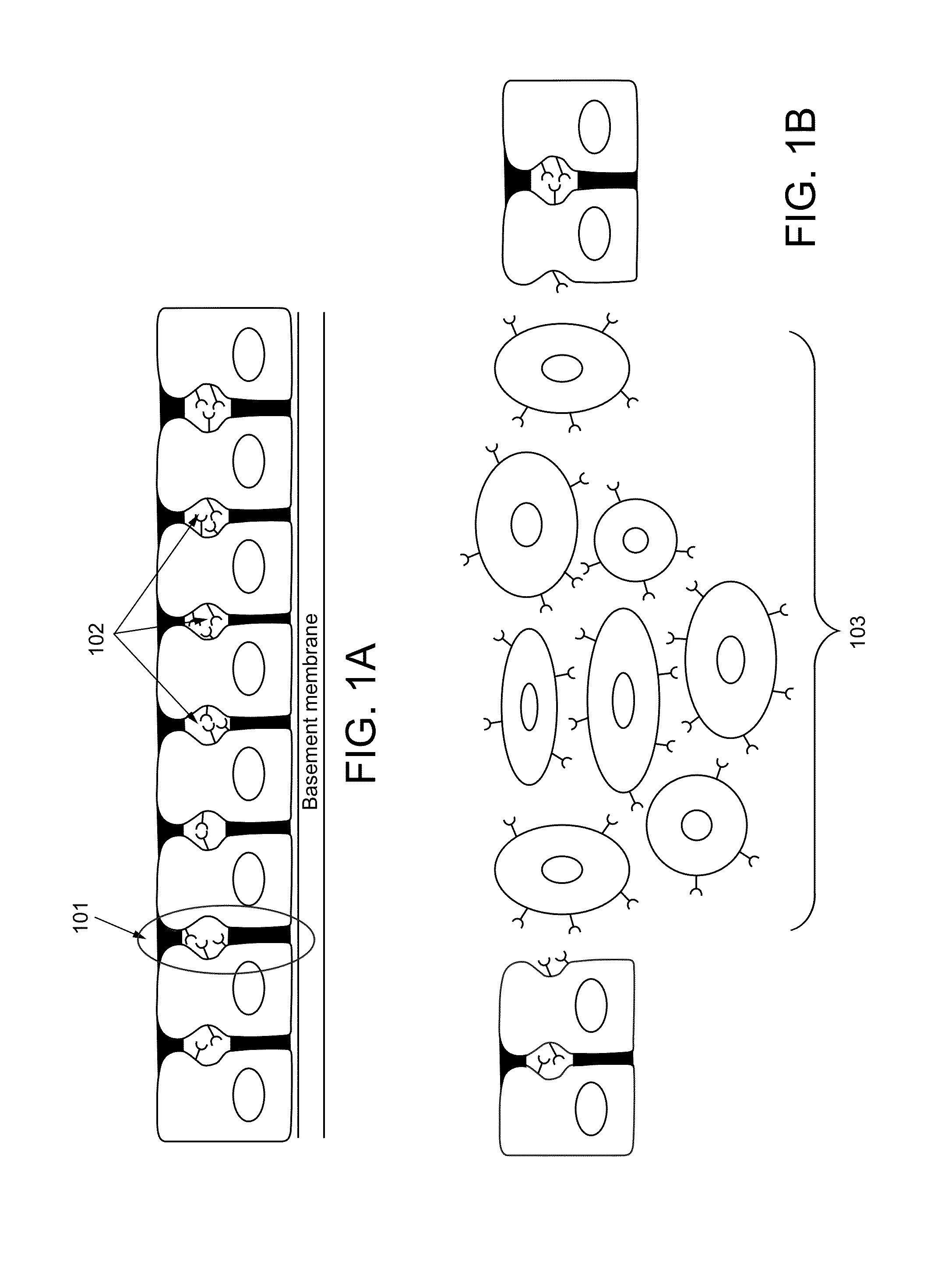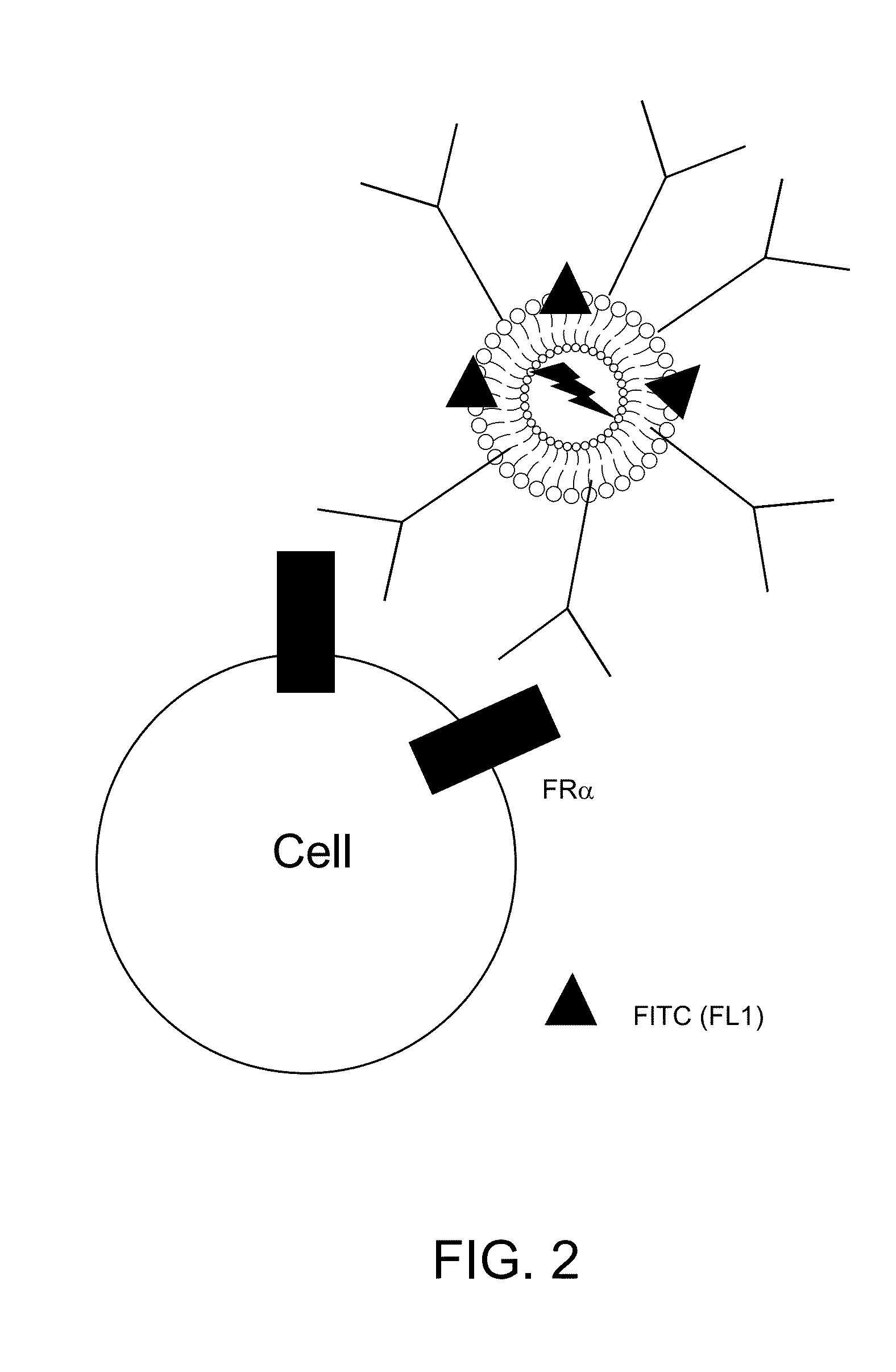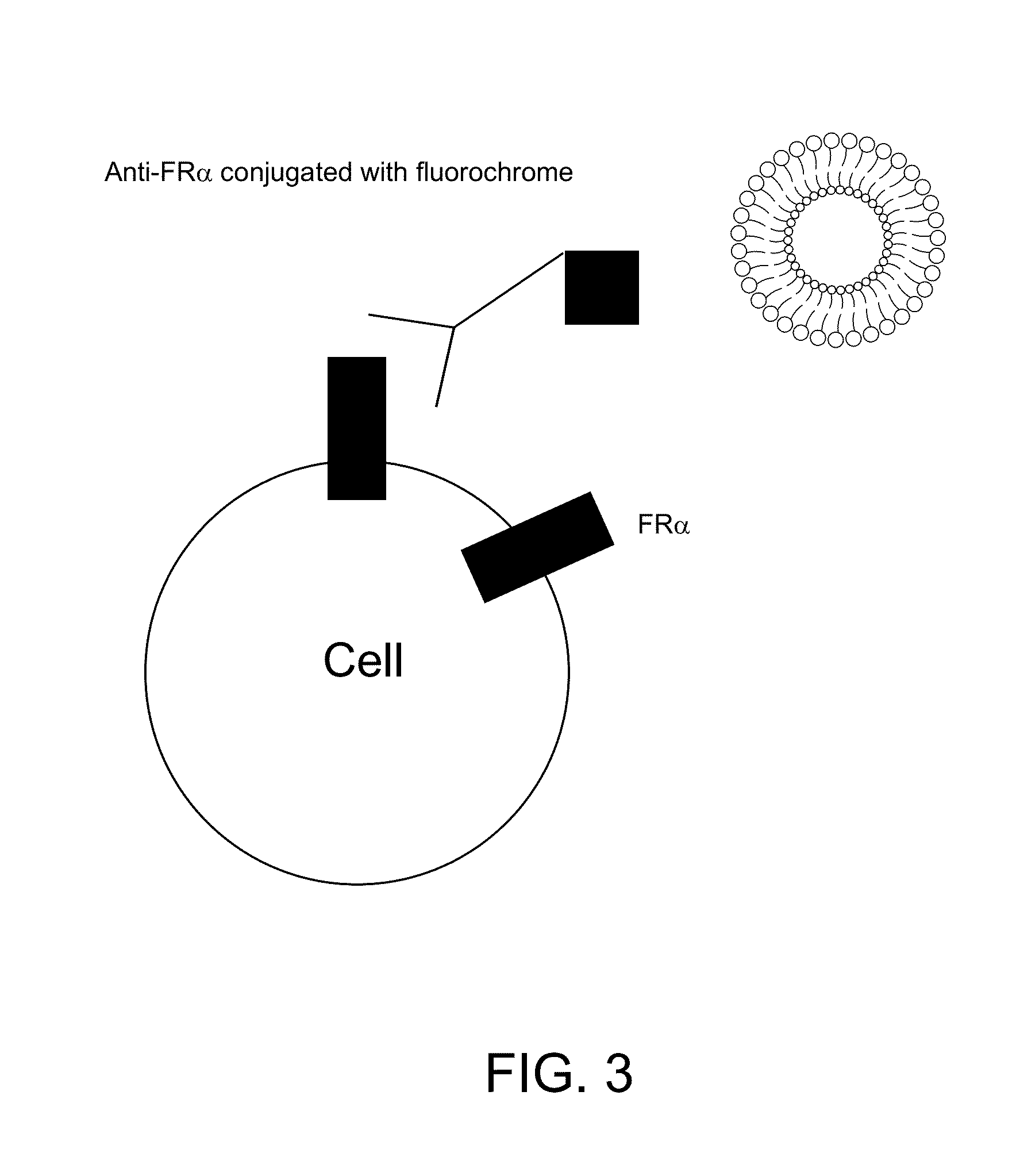Liposome encapsulated affinity drug
a technology of affinity drugs and liposomes, applied in the direction of drug compositions, peptides, immunological disorders, etc., can solve the problems of unwanted antifolate-related toxicities, difficult to treat cancer, and susceptible to the effects of antifolates
- Summary
- Abstract
- Description
- Claims
- Application Information
AI Technical Summary
Benefits of technology
Problems solved by technology
Method used
Image
Examples
example 1
Production of Folate Receptor Alpha Targeted Liposomes Containing Pemetrexed and a Hapten
Production of Pemetrexed Liposomes
[0152]Pemetrexed disodium heptahydrate (ALIMTA) is highly water soluble with a solubility of 100 mg / ml at neutral pH. Pemetrexed is encapsulated in liposomes by the following procedure. First, the lipid components of the liposome membrane are weighed out and combined as a concentrated solution in ethanol at a temperature of around 65° C. In this example, the lipids used are hydrogenated soy phosphitidyl choline, cholesterol, DSPE-PEG-2000 (1,2-distearoyl-sn-glycero-3-phosphoethanolamine-N-[methoxy(polyethylene glycol)-2000]), PEG-DSPE-malemide and PEG-DSPE-FITC. The molar ratio of HSPC:Cholesterol:PEG-DSPE is approximately 55:40:5. Next, Pemetrexed is dissolved in an aqueous buffer at a concentration of 100 mg / ml. The drug solution is heated to 65° C. The ethanolic lipid solution is injected into the Pemetrexed solution using a small bore needle. During this ste...
example 2
Cell Lines Used for Experiments
[0158]Cells lines used in the experiments are commercially available from sources such as the ATCC (American Type Culture Collection of Manassas, Va., U.S.A). The cell lines, their ATCC accession numbers and growth conditions are listed below.
[0159]Calu-3 (ATCC HTB-55); EMEM (Cat. #30-2003); 10% HI FBS; 1% Pen / Strep; 1% L-Glutamine.
[0160]KB; EMEM (Cat. #30-2003); 10% HI FBS; 1% Pen / Strep; 1% L-Glutamine.
[0161]CCD841 (ATCC CRL-1790); EMEM (Cat. #30-2003); 10% HI FBS; 1% Pen / Strep; 1% L-Glutamine.
[0162]Hs578Bst (ATCC HTB-125); Hybri-Care Medium pH 7.0 (Cat.#46-X); 30 ng / ml mouse EGF; 10% HI FBS; 1% Pen / Strep; 1% L-Glutamine.
[0163]NCI-H2087 (ATCC CRL-5922); RPMI-1640 (Cat. #30-2001); 5% HI FBS; 1% Pen / Strep; 1% L-Glutamine.
[0164]NCI-H2452 (ATCC CRL-5946); RPMI-1640 (Cat. #30-2001); 10% HI FBS; 1% Pen / Strep; 1% L-Glutamine.
[0165]OVCAR-3 (ATCC HTB-161); RPMI-1640 (Cat. #30-2001); 20% HI FBS; 1% Pen / Strep; 1% L-Glutamine.
[0166]SKBR3; McCoy 5A Medium; 10% HI ...
example 3
Determining Binding Specificity of One Sample Construct
[0169]The level of folate receptor alpha on the cell surface was measured by flow cytometry with a monoclonal antibody conjugated with a fluorochrome. A shift to the right after binding of an antibody (see, for example, FIG. 6, line 606) compared to the line before antibody treatment (see, for example, FIG. 6, line 602 and 604) indicates the detection of receptor by flow cytometry. The more the histogram (e.g., FIG. 6, line 606) shifts to the right relative to the untreated cells (see, for example, FIG. 6, line 602 and 604) the higher the levels of receptors are on the cell surface. The plots demonstrate high levels of folate receptor alpha on cancer cells, but almost undetectable levels on normal cells.
[0170]The example liposome which is part of the example liposomal composition constructed, binds to the cell surface to cells that are folate receptor alpha positive, but not cells which are folate receptor alpha negative. The ex...
PUM
| Property | Measurement | Unit |
|---|---|---|
| molecular weight | aaaaa | aaaaa |
| diameter | aaaaa | aaaaa |
| diameter | aaaaa | aaaaa |
Abstract
Description
Claims
Application Information
 Login to View More
Login to View More - R&D
- Intellectual Property
- Life Sciences
- Materials
- Tech Scout
- Unparalleled Data Quality
- Higher Quality Content
- 60% Fewer Hallucinations
Browse by: Latest US Patents, China's latest patents, Technical Efficacy Thesaurus, Application Domain, Technology Topic, Popular Technical Reports.
© 2025 PatSnap. All rights reserved.Legal|Privacy policy|Modern Slavery Act Transparency Statement|Sitemap|About US| Contact US: help@patsnap.com



